Close Ties: Louisiana Bootlace Trail Network
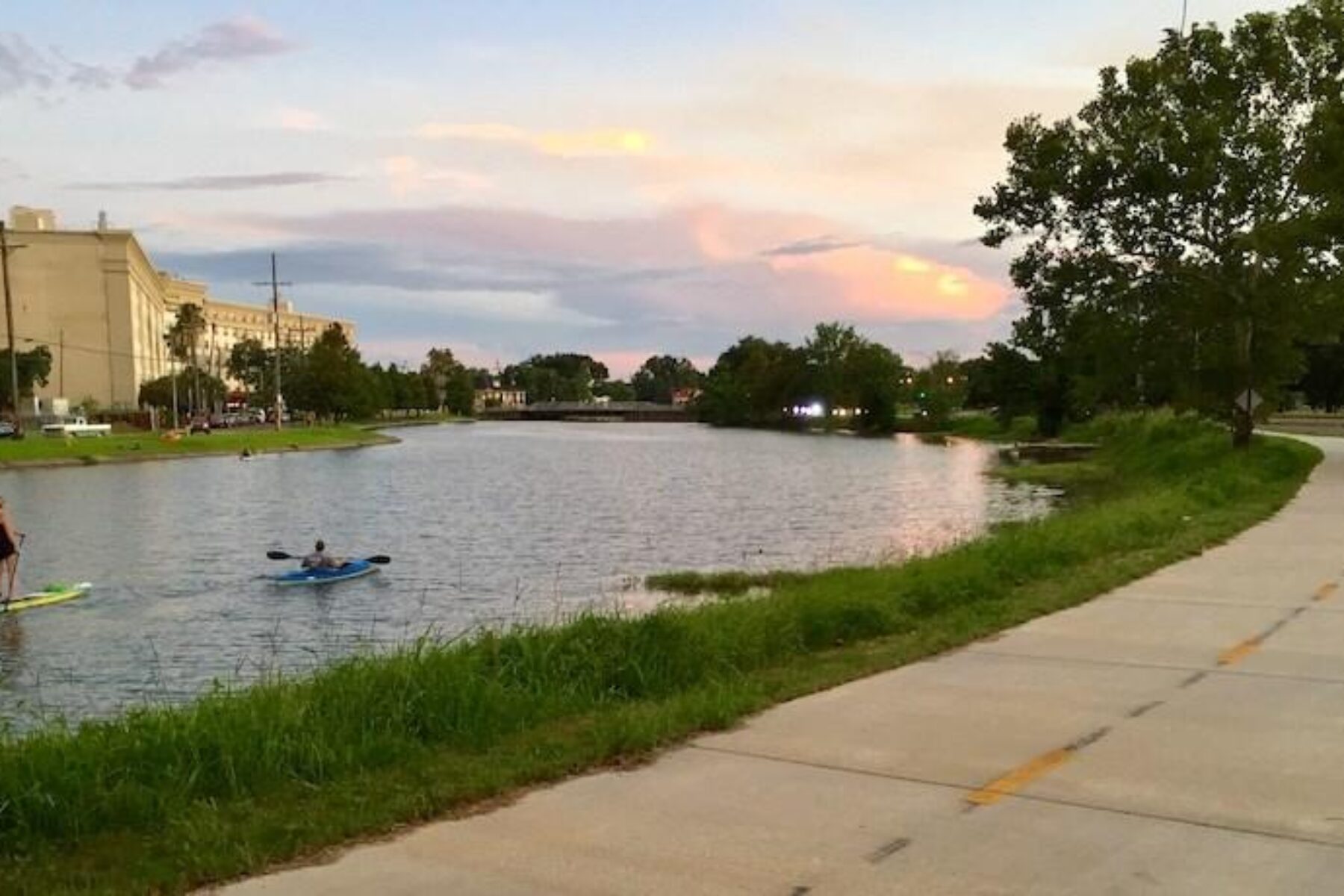
Dan Favre knows a thing or two about coalition building. The former executive director of New Orleans’ Bike Easy is working to unite seven trail organizations across a dozen parishes around a shared regional trail vision. The work requires coordinating a disparate group of nonprofits, government agencies, local businesses and devoted volunteers around one vision: completing the Louisiana Bootlace Trail Network (LBTN).
The ambitious project would unite existing trails and inspire planned segments to create a continuous trail system around Lake Pontchartrain, the 630-square-mile estuary to the north of New Orleans. Referring to Louisiana’s nickname as the “boot-shaped state,” the trail network would “lace the boot” and provide a continuous all-ages and all abilities network for recreation, transportation and tourism that stretches more than 100 miles from the Mississippi Gulf Coast to Baton Rouge.
“The dream is to create a protected trail network that circles the lake, and connects from Baton Rouge through New Orleans to the Mississippi Gulf Coast,” noted Favre. “A tourist could ride it for three or four days and have great little adventures along the way via state parks, breweries, oddities museums, quaint small towns with restaurants, hotels. It’s going to be a really fun long-weekend bike getaway.”
While centered in New Orleans, the vision for the LBTN is to complete a ring around Lake Pontchartrain. It will run south into St. Bernard Parish on an extension of the Mississippi River Levee Trail currently in progress and the funded, soon-to-come 40 Arpent Trail. The segments running west and north will flow into Baton Rouge along Louisiana Highway 68 and include miles of the Mississippi River Levee Trails, which then tie into the Baton Rouge Downtown Greenway and other urban trails. To the east, it will incorporate the Mississippi Gulf Coast through the Rigolets Islands, to include the 27-mile Tammany Trace, the 19-mile Lakefront Path in Jefferson Parish and the beginnings of the Manchac Greenway. As it heads further north, it would be hosted along the conceptual Tangi Trace through Tangipahoa Parish.
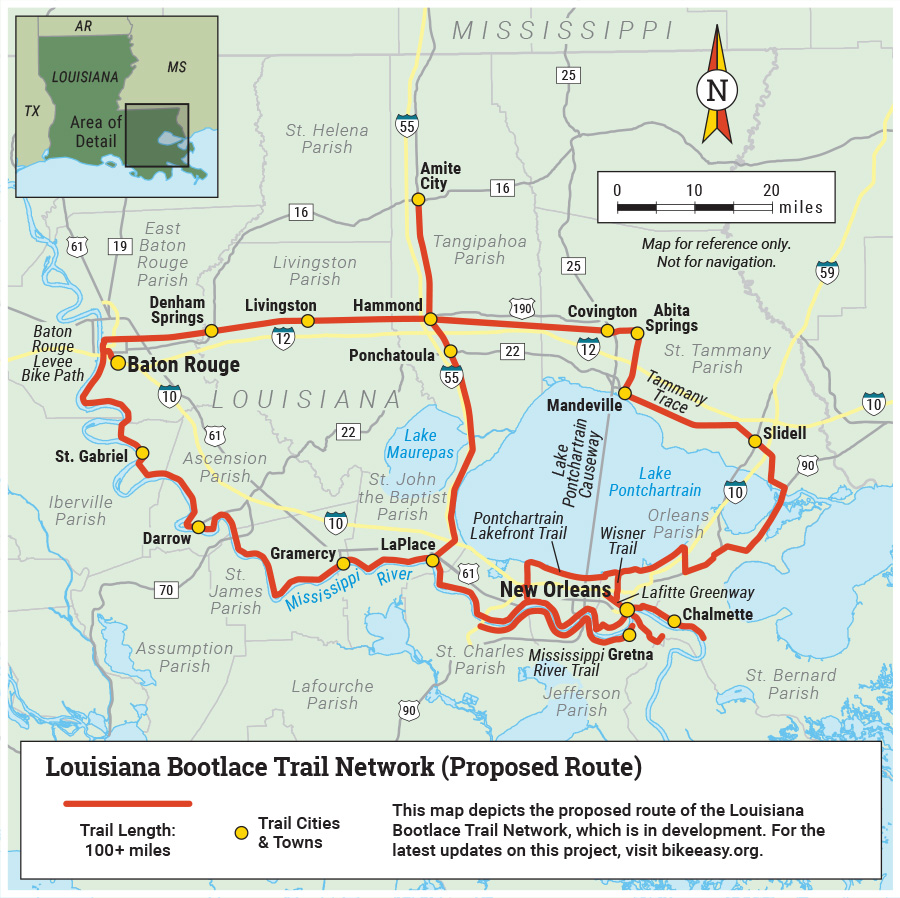
In New Orleans itself, the trail network will include the Lafitte Greenway, Crescent Park Path and the trails around City Park, along with the city’s on-street protected bike lane network. All told, the LBTN will connect dozens of communities in 12 parishes—from large urban centers and suburbs to rural towns—and a variety of natural ecosystems, including piney woods, cypress swamps, wetlands, estuaries and the mighty Mississippi.
The dream is ambitious. So is the work ahead.
PROJECT SPOTLIGHT: Louisiana Bootlace Trail Network
A Happy Beginning
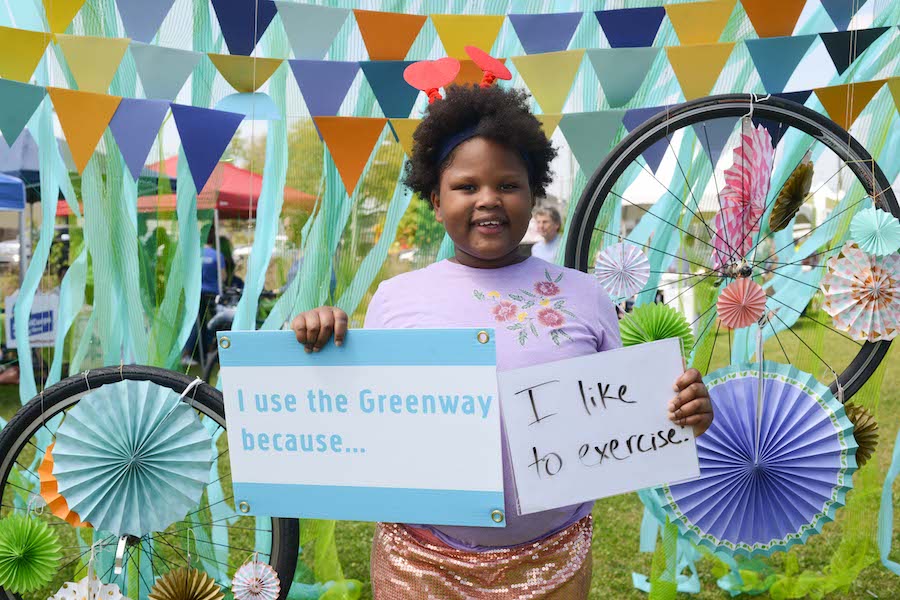
While the idea of a “ring around the lake” has been percolating in the minds of bike advocates for years (and a feasibility study was completed by the Greater New Orleans Regional Planning Commission in 1997), it took a gathering of passionate advocates to really get the ball rolling.
Jennifer Ruley, the mobility and safety program lead for the City of New Orleans Department of Public Works, explained, “We had a meeting with a few key people, including people from public works, city health, the planning commission and local bike organizations. We literally got together for a happy hour to talk this over and brainstorm about the direction we wanted to take. There was lots of good, positive energy from all these people who’d dedicated large parts of their careers to create better networks and systems for trails.”
Ruley is quick to point out that everyone biked to the bar that fateful evening in 2018, and that it’s where the “Bootlace” name was developed. She also credits Rails-to-Trails Conservancy (RTC) with part of the inspiration.
“As RTC shifted their focus to concentrate more on trail networks, we all ‘got it’ and realized why a network would be important. We took the prompt that RTC gave us to start to conceptualize just what this entire trail network could look like.”
Meeting the Needs of the Community
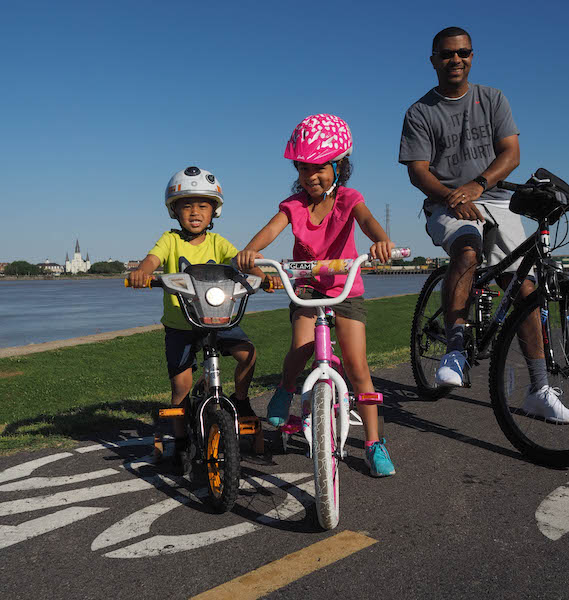
But while the recreation and tourism benefits of such a grand trail abound, there are also more serious needs within the region for more trails. For one, more than 20% of all New Orleans residents do not have, or do not have access to, a car. For many people, bikes are a more accessible transportation option, and the city’s trails are a very viable (and much safer) transportation alternative to on-road riding.
“These greenways are real, legitimate transportation routes,” stated Sophie Harris Vorhoff, executive director of Friends of Lafitte Greenway. “On weekdays, you see people biking downtown to jobs, be they service jobs or white-collar ones, and people going to and from the big downtown medical centers.”
The state also ranks near the bottom in most health outcome measures, with high rates of obesity and some of the nation’s highest mortality rates from chronic illnesses like cancer and heart disease.
Dr. Mike Hill is the medical director for the St. Tammany Quality Network and on the executive committee for the Healthier Northshore initiative, a coalition of local health care leaders, elected officials and nonprofit organizations. “Part of this initiative, and everything we’re trying to do for the community, is to promote health and wellness and thereby decrease visits to the hospital,” he said. “When people can access trails, they then have access to better opportunities for cardiovascular improvement and weight loss.”
The physician (and passionate trail user) also notes that, while the state has very high levels of diabetes and obesity, on the north shore of Lake Pontchartrain people have lower levels than in the rest of the state. He credits access to the Tammany Trace—which connects Covington and Slidell—as a reason for these healthier statistics. St. Tammany Parish government officials count some 300,000 trail users per year on the rail-trail, although they suspect the number is much higher. Opened in 1994, the trail was inducted into the Rail-Trail Hall of Fame in 2017.
Other local health organizations recognize the benefits of local trails as well. Michael Tipton, president of the Blue Cross and Blue Shield of Louisiana Foundation, said the foundation increased its support and funding for local trail development about 10 years ago to combat obesity at the local level. Since then, its impact has been noted, with one teacher in the town of Jena losing 40 pounds after a new trail, sponsored in part by the foundation, opened near her home.
“We know people using their own energy to get from one place to another, or active transportation, is a critical part of living a healthy lifestyle,” said Tipton. “Through the programs we support, we’re trying to better design spaces and build trails to help people do just that.”
Along with improved health, the trails bring many positive economic benefits to the region as well, and the towns of Covington, Abita Springs, Mandeville and Slidell have seen this from the Tammany Trace.
“Towns that are on the Trace are very desirable, and there’s a correlation to property values,” noted Anne Pablovich, the community health coordinator with the St. Tammany Health System. “People want to live on the Trace, and you see that in the price of homes that are located near it. It is a huge amenity.”
The Trace and its string of parks are also the site of hundreds of events each year, from reunions to birthday parties, which collectively infuse tens of thousands of dollars back into these communities. Each month, officials record hundreds of visitors from outside the parish—and often, more than 100 of these are from out of state or even from other countries. The Trace, as the first and oldest segment of the LBTN, is a shining example of the benefits that await communities still developing their own trails.
TRAIL OF THE MONTH: Tammany Trace (August 2017)
Working Together
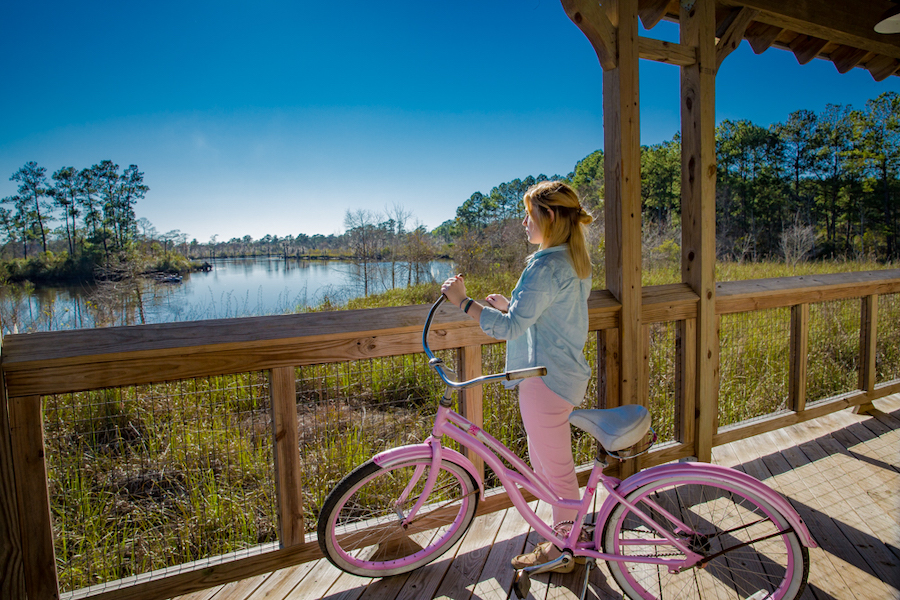
The next step in the evolution of the LBTN will certainly involve a lot of coalition building. Bike Easy was able to secure an RTC Doppelt Fund grant to get the collaborative process started and hopes to bring together all the key parties at a stakeholder summit later this year.
But, of course, there will be challenges involved with developing a trail network with such a diverse group of advocates and agencies, each with its own management model, as Favre is quick to point out.
“The Lafitte Greenway is formally managed by New Orleans’ recreation department, but there’s also a nonprofit ‘friends’ group that provides additional support,” Favre explained. “Trails on the lakefront levees have a levee board involved, since the trails run on top of them. Some of the involved trail segments are run entirely by nonprofits and have no local government support. The trail in Tangipahoa Parish is, currently, just a handful of conceptual drawings and supported by a band of concerned citizens determined to make it happen.”
But even with this multitude of challenges, Favre is confident of the way forward and excited for this level of collaboration.
“The stakeholder summit really is the next big step in terms of turning these groups into a real coalition,” he said. “The summit will pull everyone together to see how all these individual segments of trail are working, swap ideas to see whose ideas can help other trails and, of course, to really start to rally around this bigger collective vision that is the Louisiana Bootlace Trail Network.”
Tying It Up With a Bow
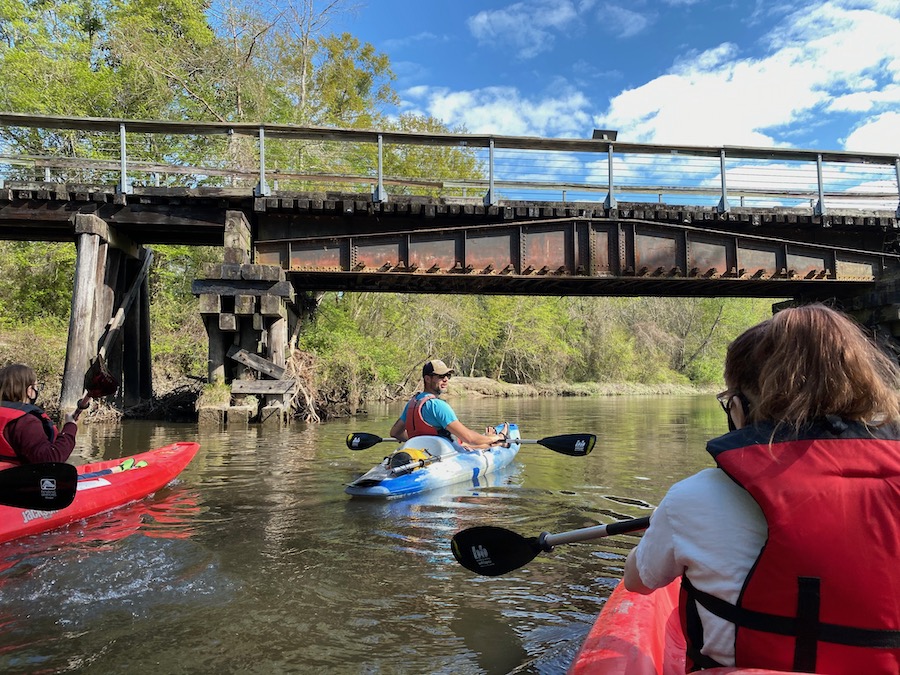
Favre believes the stakeholder summit should go a long way toward getting people on the same page and developing something of a road map for their goal of ‘lacing up the boot.’ A key element after that will be securing more significant funding.
Ruley sees state involvement as a critical next step. “There needs to be leadership from the state to really unleash all the possible potential here from all these interested communities. You need that leadership, then funding and then an ongoing effort to prioritize this and say, ‘Hey everyone, here’s how we’re going to get it done.’ And it all needs to be sustained by regular meetings where we highlight successes and share them across these communities. The problem solving occurs on the ground, and local groups need all the support they can get.”
There are also significant physical challenges to consider as well. While the area’s lack of elevation will make for a relatively flat trail system, New Orleans itself is an active, bustling port city rife with canals and railroads, as well as a river in the center and lake to the north. Bridges on the southeast side of the lake are in real need of repair.
But these hurdles are well known and will become better understood, documented and addressed as the coalition coalesces. And these plucky local leaders are undaunted, fueled by not just their own passion and vision, but also by a notable public groundswell of trail use and general engagement by locals.
Ruley has seen her trail-focused city department grow from one staff person to four over the past several years. Her team continues to record double-digit growth of trail users per month compared to the previous years’ average and sees significant spikes in use during large events like jazz festivals and Mardi Gras.
The Lafitte Greenway, which runs for 2.6 miles through New Orleans—from the edge of the French Quarter to the doorstep of City Park—sees more than a thousand users each day, and about a 10% increase in users every year. A recent citywide survey on off-road bike options resulted in more than 300 responses within the first 48 hours, and local support for more bike options was overwhelmingly positive.
“The trail network has the opportunity to even further expand the recreational use of all these greenways and trails and draw even more people who want to take these larger rides for enjoyment, exercise, health or transportation,” Vorhoff added. “It can connect us to communities around the region, and that’s really very exciting for us all.”
Local Bike Shops Benefit
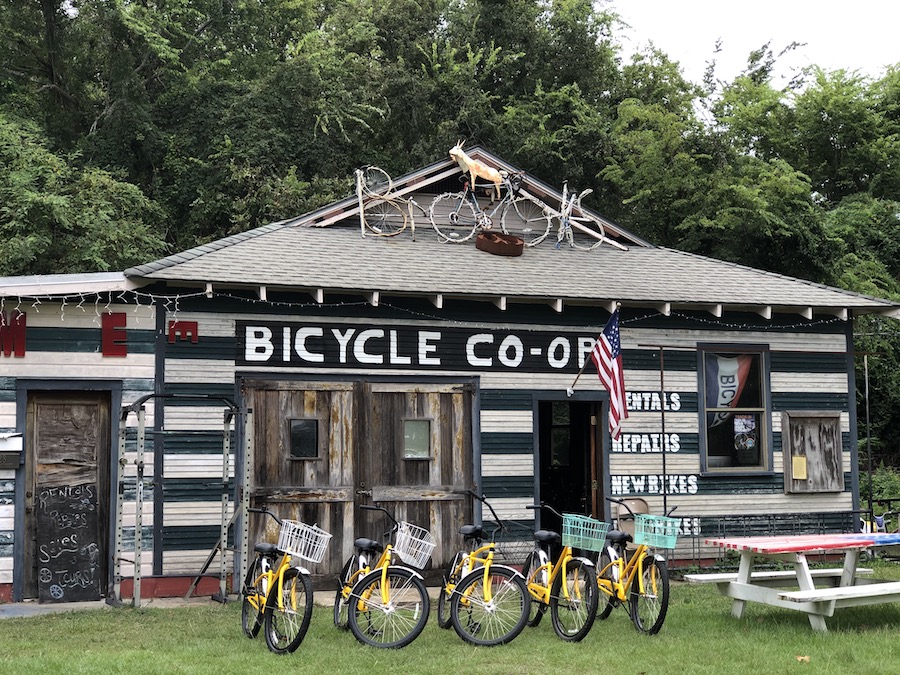
The economic benefits of trails are obvious to Patrick Brooks. Indeed, his career very much depends on them. The former Marine and Afghanistan veteran started a bike shop in 2009 near the Tammany Trace rail-trail. Now he has three shops, in Mandeville, Covington and Slidell, and a bike rental stand in Abita Springs (brooksbikeshop.com).
Brooks grew up as an Air Force ‘brat’ with a father who biked everywhere and rarely had a car. Naturally, Brooks started working on bikes at an early age and continued to do so while in the Marine Corps and then while putting himself through college on the G.I. Bill. Once out of college, he just kept going.
“I remember the first bikes I bought,” said Brooks. “It was 2007, and they were two old Schwinns, and I bought them both for $50. I fixed them up and sold each for $100. I’ll never forget them.”
His shops started out with a focus on fixing up old bikes but quickly expanded into sales of new bikes and rental fleets for riders on the nearby Trace. They also rent kayaks, paddle boards and canoes. He hopes to expand further someday to make custom bikes.
“I’d love to position ourselves as a shop that specializes in actually making choppers as well as vintage American bikes,” said Brooks, who looks forward to the establishment of the Louisiana Bootlace Trail Network and the opportunities for expansion that may result.
This article was originally published in the Fall 2021 issue of Rails to Trails magazine. It has been reposted here in an edited format. Subscribe to read more articles about remarkable rail-trails and trail-networks while also supporting our work.

Donate
Everyone deserves access to safe ways to walk, bike, and be active outdoors.
